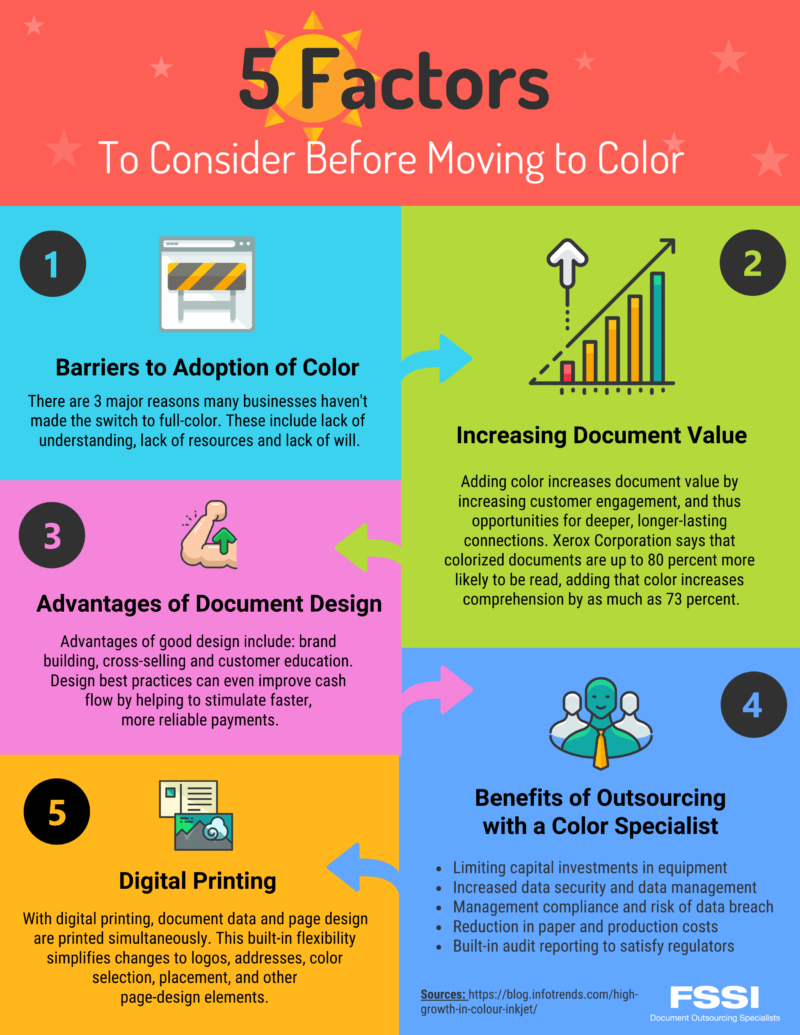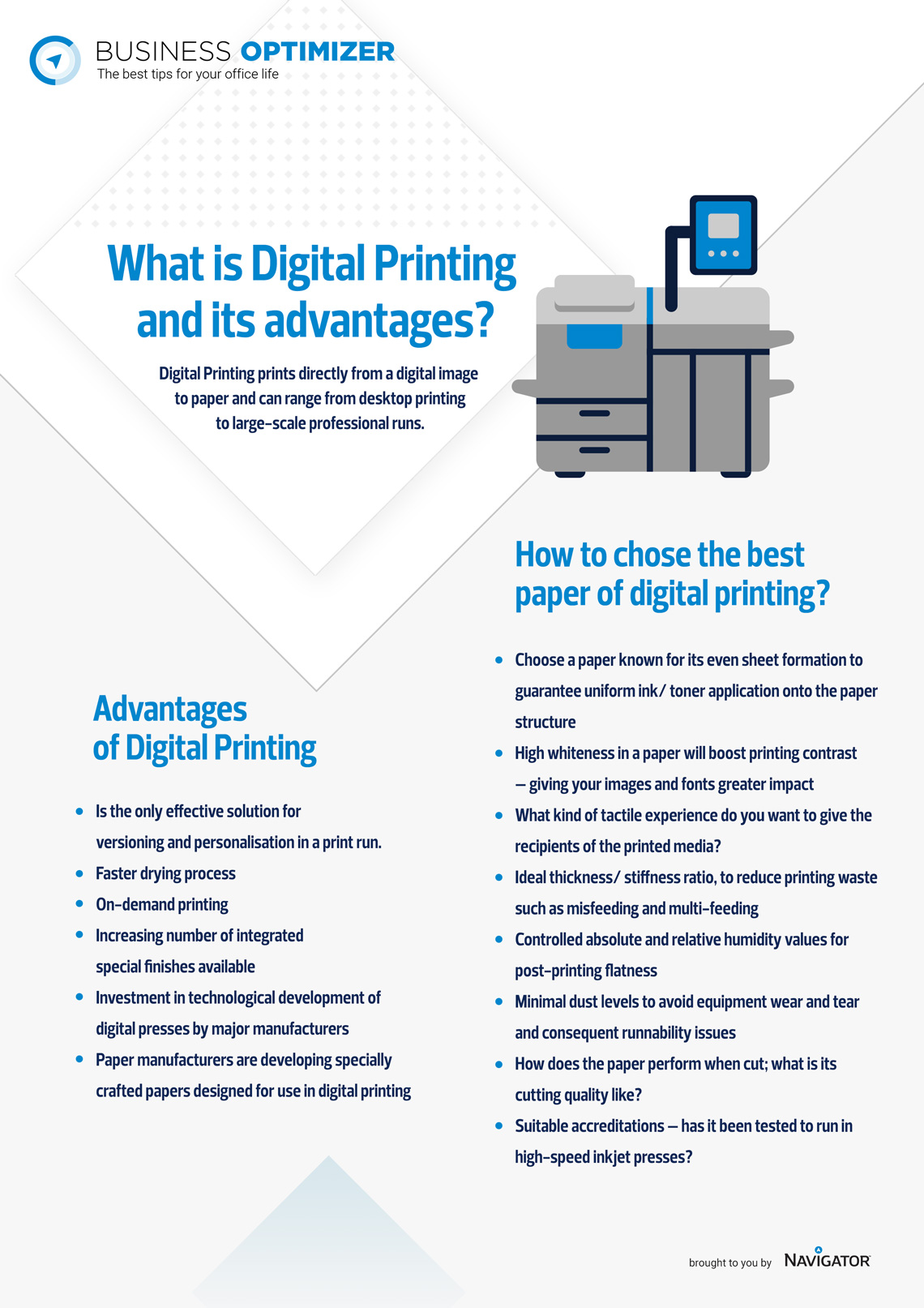Digital Printing for Dummies
Table of ContentsGetting The Digital Printing To WorkThe Greatest Guide To Digital PrintingA Biased View of Digital PrintingSome Known Questions About Digital Printing.Digital Printing - TruthsThe Definitive Guide to Digital Printing
Variable information printing, such as straight mail with customized codes and addresses, is preferably fit for digital printing. Digital fast printing just needs 4 steps of design, testimonial, printing and binding to obtain whatever done. Digital quick printing has an exceptional benefit: print on need.According to PMMI, digital printing allows brand names and producers to respond rapidly to client needs while boosting the supply chain, decreasing warehousing cost and waste, and enjoying faster time to market. That all sounds great, yet just how does this innovation do all that? The significant differentiator of these technologies is that there are no set up costs and no plates with electronic printing.
Digital Printing Can Be Fun For Everyone
According to Wikipedia, the best distinction between electronic printing and conventional approaches such as lithography, flexography, gravure, or letterpress - Digital Printing is that there is no need to change printing plates in electronic printing, whereas in these analog printing methods home plates are repetitively replaced. This leads to quicker turnaround time and reduces expense when using digital printing.
Digital printing is highly versatile, so it's easy to make changes to the package design promptly. It all goes back to the plates.
Much more stock can suggest even more waste later on. With traditional printing techniques, short-run printing is just not feasible. Because a terrific style can make or break your item, digital printing regularly produces high-grade, clear and colorful graphics each time. Digital printing on flexible bags includes the intense, lively, and exact graphics that almost bid consumers to connect and touch them.
Digital printing is the process of printing digital-based pictures straight onto a variety of media substrates. There is no requirement for a printing plate, unlike with balanced out printing. Digital files such as PDFs or desktop publishing data can be sent straight to the electronic printing machine to print on paper, image paper, canvas, fabric, synthetics, cardstock and various other substratums.
More About Digital Printing
According to PMMI, electronic printing permits brands and manufacturers to respond rapidly to client needs while boosting the supply chain, lowering warehousing expense and waste, and delighting in faster time to market. That all sounds fantastic, but just how does this modern technology do all that? The major differentiator of these innovations is that there are no set up fees and no plates with electronic Full Article printing.
According to Wikipedia, the best difference in between electronic printing and typical approaches such as lithography, flexography, gravure, or letterpress is that there is no need to change printing plates in digital printing, whereas in these analog printing approaches the plates are repetitively replaced. This leads to quicker turnaround time and decreases price when utilizing electronic printing.

9 Easy Facts About Digital Printing Shown
Extra inventory can suggest more waste later on. With traditional printing approaches, short-run printing is just not possible. Since a terrific style can make or break your item, electronic printing constantly produces high-grade, clear and vivid graphics each time. Digital printing on versatile bags includes the intense, lively, and specific graphics that practically bid customers to reach out and touch them.

According to PMMI, digital printing enables brands and producers to respond rapidly to client demands while boosting the supply chain, reducing warehousing price and waste, and appreciating her comment is here faster time to market. That all noises wonderful, but just how does this technology do all that? The significant differentiator of these innovations is that there are no set up costs and no plates with digital printing.
The Greatest Guide To Digital Printing
This results in quicker turn-around time and decreases price when utilizing digital printing.
Quick production suggests getting your item to market faster. It also suggests it's simpler and faster to make adjustments later, when you transform a dish, include a SKU, or produce seasonal product packaging. Digital printing is very versatile, so it's very easy to make modifications to the package design promptly. It all goes back to home plates.

Some Known Questions About Digital Printing.
Digital printing is the process of printing digital-based pictures straight onto a variety of media substrates. There is no need for a printing plate, unlike with countered printing. Digital files such as PDFs or desktop publishing data can be sent directly to the digital printing press to print on paper, picture paper, canvas, material, synthetics, cardstock and other substrates.
Comments on “5 Simple Techniques For Digital Printing”